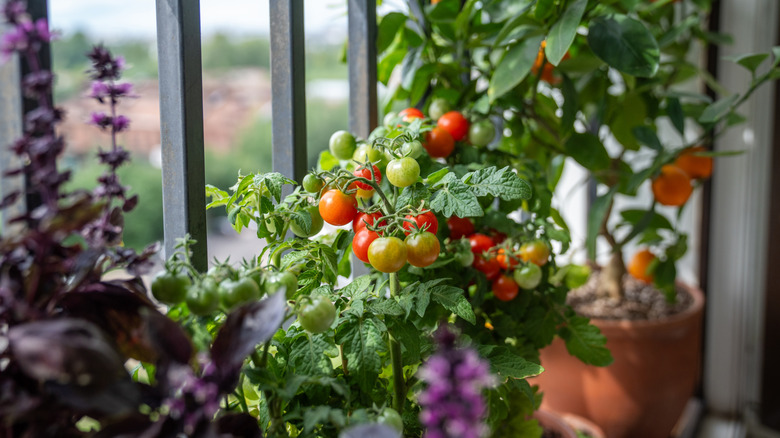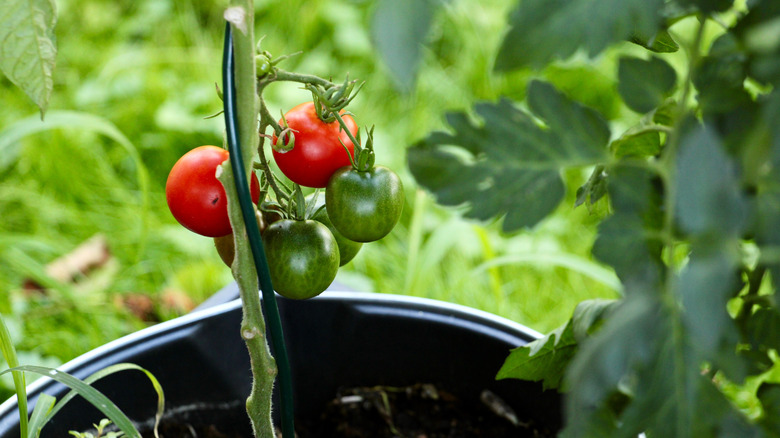Set Your Tomato Plants Up For Success With This Clever Zip Tie Hack
We may receive a commission on purchases made from links.
Famous for growing easily and abundantly in the right conditions, tomato plants (Solanum lycopersicum) are beloved among gardeners and home cooks. Native to South America, these popular fruits (and they are fruits, though nutritionists also consider them vegetables) grow well as annuals. They come in such a wide range of shapes, sizes, colors, and flavors that there's truly a tomato variety out there for everyone. That said, planting tomatoes isn't entirely foolproof. There are some big mistakes you'll want to avoid, as well as select tips and tricks that will help you succeed.
Since tomatoes grow vertically on vines, structural support is vital. Zip ties are a clever, budget-friendly way to secure your plant to a trellis or tomato cage. This handy hack for growing tomatoes will help your plant stay elevated, get adequate airflow, and remain pest- and disease-free — which, in turn, will encourage it to produce as many fruits as possible during peak growth season. You might even notice that trellising correctly makes it easier for you to access your tomatoes and pluck or cut them off the vine once they're fully ripe.
How to support a tomato plant using a trellis and zip ties
Zip ties offer an easy way to secure tomato vines to trellises or other support structures. These affordable plastic ties are super strong, so you won't have to worry about wind, rain, or critters undoing them. They're also ubiquitous — there's a high likelihood that you already have some zip ties at home. If not, you can snag some at your local hardware store or order this ANOSON pack of 400 Zip Ties online for roughly the same price as a seasonal latte from your favorite coffee shop.
The technique for this hack is totally intuitive: Once you've procured some zip ties, position your tomato plant so that it's parallel to the trellis you're using to support it. Then, loop one or two zip ties around the trellis and the plant stem and fasten them in place, following the manufacturers' instructions to ensure that they won't budge. It's as simple as that! You can follow the same protocol for any vining garden plants or top-heavy houseplants in your collection. You can even double up on gardening projects and DIY your own trellis out of materials you already have lying around.

